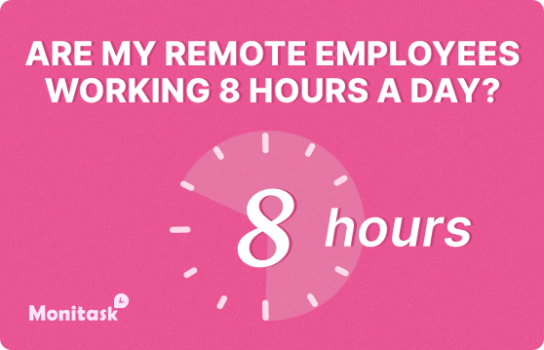Employee Social Wellness
Employee Social Wellness: A Comprehensive Guide for HR Professionals
In today's fast-paced and interconnected work environment, employee social wellness has emerged as a critical aspect of overall workplace health and productivity. As HR professionals, understanding and promoting social wellness among employees is not just a nice-to-have; it's become an essential component of successful organizational strategies. This comprehensive guide delves into the concept of employee social wellness, its importance, and practical ways to foster it within your organization.
What is Employee Social Wellness?
Employee social wellness refers to the ability of individuals to create and maintain meaningful relationships with colleagues, superiors, and subordinates within the workplace. It encompasses the quality of interpersonal interactions, the sense of belonging, and the overall social climate of an organization. Social wellness is about fostering a supportive work environment where employees feel connected, valued, and engaged.
At its core, social wellness is about creating a work culture that promotes positive social interactions, collaboration, and a sense of community. It's not just about organizing team-building activities or after-work socials (although these can certainly contribute). Rather, it's about cultivating an atmosphere where employees feel comfortable being themselves, expressing their ideas, and working together towards common goals.
The Importance of Social Wellness in the Workplace
The significance of social wellness in the workplace cannot be overstated. Here are some key reasons why it should be a priority for HR professionals:
1. Enhanced Employee Engagement
When employees feel socially connected at work, they're more likely to be engaged with their tasks and the organization as a whole. This increased engagement often translates into higher productivity, better quality of work, and increased job satisfaction.
2. Improved Mental Health
Social connections act as a buffer against stress and can significantly improve mental health. In a socially supportive work environment, employees are better equipped to handle work-related pressures and challenges.
3. Increased Collaboration and Innovation
A socially well workplace fosters an atmosphere of trust and openness. This, in turn, encourages collaboration and the free exchange of ideas, leading to increased innovation and problem-solving capabilities.
4. Lower Turnover Rates
Employees who feel socially connected at work are more likely to stay with the organization long-term. This reduced turnover can lead to significant cost savings in recruitment and training.
5. Better Overall Organizational Performance
When social wellness is prioritized, it can lead to improved communication, higher morale, and a more positive work culture. These factors collectively contribute to better overall organizational performance.
Key Components of Employee Social Wellness
To effectively promote social wellness in the workplace, it's important to understand its key components:
1. Positive Relationships
This involves fostering an environment where employees can build and maintain healthy, supportive relationships with their colleagues. It's about creating opportunities for meaningful interactions beyond just work-related discussions.
2. Effective Communication
Clear, open, and respectful communication is crucial for social wellness. This includes not just verbal communication, but also non-verbal cues and active listening.
3. Inclusivity and Diversity
A socially well workplace embraces diversity and ensures that all employees feel included and valued, regardless of their background, beliefs, or personal characteristics.
4. Work-Life Balance
While this might seem counterintuitive, promoting a healthy work-life balance actually contributes to better social wellness at work. When employees have time for their personal lives, they're more likely to bring their best selves to work.
5. Conflict Resolution
In any social environment, conflicts are inevitable. A socially well workplace has mechanisms in place to address and resolve conflicts in a constructive manner.
Strategies to Promote Employee Social Wellness
Now that we understand the importance and components of social wellness, let's explore some practical strategies to promote it in the workplace:
1. Create Opportunities for Social Interaction
Organize team-building activities, social events, or even simple coffee breaks where employees can interact in a more relaxed setting. These don't always have to be elaborate affairs; sometimes, a quick 15-minute virtual catch-up can do wonders for team bonding.
2. Foster a Culture of Appreciation
Encourage employees to recognize and appreciate each other's contributions. This could be through a formal recognition program or simply by promoting a culture where saying "thank you" and acknowledging good work is the norm.
3. Promote Collaborative Work
Design projects and tasks that require collaboration between different team members or departments. This not only improves work outcomes but also helps build relationships across the organization.
4. Implement Mentoring Programs
Mentoring programs can help new employees feel more connected and provide valuable social and professional support. They also give more experienced employees an opportunity to share their knowledge and feel valued.
5. Encourage Open Communication
Create channels for open communication where employees feel safe to share their ideas, concerns, and feedback. This could be through regular team meetings, suggestion boxes, or anonymous feedback tools.
6. Promote Diversity and Inclusion
Implement policies and practices that promote diversity and ensure all employees feel included and respected. This could include diversity training, inclusive hiring practices, and celebrating different cultures and backgrounds.
7. Support Work-Life Balance
Encourage employees to maintain a healthy work-life balance by offering flexible working hours, remote work options, and respecting off-hours. This shows that you value their personal time and well-being.
8. Address Conflicts Promptly and Constructively
Develop clear procedures for addressing conflicts and train managers in conflict resolution techniques. Addressing issues promptly and fairly can prevent them from escalating and damaging workplace relationships.
9. Create Comfortable Physical Spaces
If possible, design office spaces that encourage interaction. This could include communal areas, comfortable break rooms, or even just arranging desks in a way that facilitates communication.
10. Leverage Technology Wisely
Use collaboration tools and social platforms to connect employees, especially in remote or hybrid work environments. However, be mindful of potential downsides like digital fatigue and ensure these tools enhance rather than hinder social connections.
Measuring and Evaluating Social Wellness
To ensure your social wellness initiatives are effective, it's important to measure and evaluate them regularly. Here are some ways to do this:
1. Employee Surveys
Conduct regular surveys to gauge employees' perceptions of social wellness in the workplace. Ask about their relationships with colleagues, sense of belonging, and overall satisfaction with the social aspects of their job.
2. Engagement Metrics
Monitor employee engagement levels through metrics like participation in social events, usage of collaboration tools, and involvement in voluntary initiatives.
3. Turnover Rates
Keep track of turnover rates and conduct exit interviews to understand if social factors play a role in employees' decisions to leave.
4. Performance Indicators
Look at team performance indicators. Teams with good social wellness often show improved collaboration and productivity.
5. Health and Wellbeing Metrics
Monitor overall employee health and wellbeing indicators, as social wellness can have a significant impact on these areas.
Challenges in Promoting Social Wellness
While the benefits of social wellness are clear, implementing effective strategies can come with challenges. Here are some common obstacles and how to address them:
1. Remote and Hybrid Work Environments
With more employees working remotely, fostering social connections can be challenging. To address this, consider virtual social events, online collaboration tools, and regular video check-ins to maintain a sense of connection.
2. Diverse Workforce
A diverse workforce brings many benefits, but it can also present challenges in terms of different communication styles and cultural expectations. Address this through cultural awareness training and by creating an inclusive environment that celebrates diversity.
3. Time and Resource Constraints
Implementing social wellness initiatives can be time-consuming and resource-intensive. Start with small, manageable initiatives and gradually expand your efforts. Remember that many social wellness strategies (like promoting open communication) don't necessarily require significant resources.
4. Resistance to Change
Some employees or managers may be resistant to new social wellness initiatives. Address this through clear communication about the benefits of social wellness and by involving employees in the planning and implementation of new programs.
5. Maintaining Professionalism
While promoting social connections is important, it's also crucial to maintain a professional environment. Set clear guidelines for appropriate behavior and ensure that social initiatives don't interfere with work responsibilities.
The Future of Employee Social Wellness
As we look to the future, several trends are likely to shape the landscape of employee social wellness:
1. Technology Integration
Advanced technologies like AI and VR may play a larger role in fostering social connections, especially in remote work settings. For example, VR meeting rooms could provide a more immersive social experience for distributed teams.
2. Personalization
As organizations recognize that different employees have different social needs, we may see a trend towards more personalized social wellness programs.
3. Mental Health Focus
With increasing awareness of mental health issues, social wellness initiatives are likely to become more closely integrated with mental health support programs.
4. Data-Driven Approaches
Advanced analytics may allow organizations to better understand and measure social dynamics in the workplace, leading to more targeted and effective social wellness strategies.
5. Global Connections
As organizations become increasingly global, there may be a greater emphasis on fostering social connections across different countries and cultures.
Conclusion
Employee social wellness is not just a buzzword; it's a critical component of a healthy, productive, and successful workplace. As HR professionals, we have the opportunity and responsibility to create environments where employees can thrive socially as well as professionally.
By understanding the importance of social wellness, implementing effective strategies, and continually evaluating and adapting our approaches, we can create workplaces that are not just productive, but also socially fulfilling. Remember, a socially well workplace is one where employees don't just work together – they thrive together.
In the end, promoting employee social wellness is about recognizing that our employees are not just workers, but whole human beings with social needs and desires. By addressing these needs, we create workplaces that are not only more productive and successful, but also more human.


